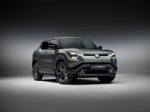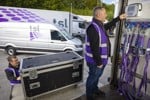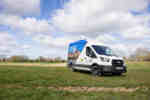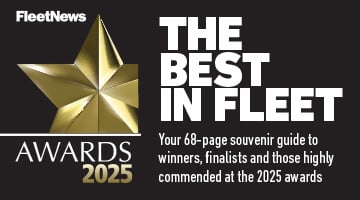For Toyota, it is the 'car in front', and while this may not be strictly true, it is a regular visitor to the top 10 best selling manufacturers in fleet.
However, the Japanese maker's performance in the LCV market is less successful — it finished 2001 in eighth place in the best-selling league table with 3,200 sales. By contrast, the biggest player in the sector, Ford, shifted roughly 60,000 vans during that year.
What is holding Toyota back in this sector is a limited product range and a lack of LCV focus among its dealer network.
This presents Peter Howarth, Toyota's commercial vehicle manager, with something of a challenge, especially as it has recently launched the Dyna model here. Howarth said: 'We are restricted by our limited van range, which means we can only compete in one corner of the marketplace. We have no car-derived van and no large panel van, but the Dyna does open up the chassis cab and dropside market to us.'
And getting the product right will allow Toyota to begin the next phase of its business plan and address a fundamental obstacle to progress in the LCV market.
'Perhaps the biggest flaw is that the business customers' experience has not been all they had hoped for - the van knowledge of our dealers is not great because they are so car focused,' said Howarth.
'Van fleet decision-makers want to meet somebody who understands not only the product but the individual requirements of the van fleet buyer.'
Howarth knows that Toyota will have to look sharp if it wants to make progress in the van market. The solution is to set up dedicated commercial vehicle centres across its dealer network and Toyota aims to create 100 van-specific centres.
They will be a dedicated part of the manufacturer's 220-strong dealer network and will boast a dedicated 'van man' who will have a wide understanding of the marketplace and be capable of explaining the product to the customer.
The centres will also offer extended servicing hours, which means fleet decision-makers will be able to minimise vehicle downtime - a key consideration for operators who need vehicles on the road to be earning their keep.
For Howarth, the key to success is getting the simple things right: 'For example, displaying the product externally sends out a strong message about who we are and what we do.
'This visibility of vans within the showroom will be supported by a dedicated customer area, allowing a proper business discussion to be conducted. Fleet van sales will become a core part of our business rather than part of a wider fleet proposition where a company running cars will also run a selection of vans,' he said.
And with the new Dyna model, Toyota has fresh product to show to buyers. The Dyna was launched late last year and the Hiace and Hilux models have also been refreshed, most notably with the choice of a new 2.5-litre common rail diesel engine being made available in 88bhp or 102bhp versions.
But Howarth knows that a new range and new engines will not be enough to fuel Toyota's ambitions in the LCV sector.
Next on his agenda will be expanding the product offering. He clearly wants Toyota to be a serious player in the LCV market and he knows that to do this, the firm must have a large panel van to compete with the Ford Transit and Mercedes-Benz Sprinter.
He said: 'We will be looking at developing a large panel van in the future - this will be very much a European strategy but I can't tell you anything else about it at the moment.'
However, he is adamant Toyota will go it alone and not join forces with a rival to jointly develop a vehicle.
'We are wary of joint ventures because they often undermine the image of both players, which can be very negative,' he said.
Howarth believes that one of the firm's strengths is its ability to appeal to local fleet operators. And he hopes that by underlining its commitment to van sales, fleet decision-makers will notice Toyota not just for its cars but for its vans as well. It may take some years, but eventually the van in front could well be a Toyota.
















Login to comment
Comments
No comments have been made yet.